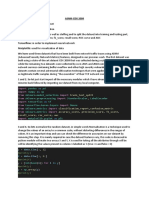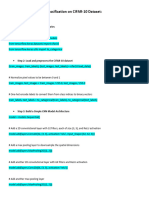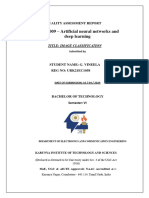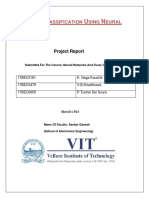0% found this document useful (0 votes)
13 views5 pagesDeep Learning
The document outlines two exercises: the first involves implementing basic image processing operations such as edge detection using the Canny algorithm and feature extraction using Harris Corner detection, with results displayed visually. The second exercise focuses on creating a simple neural network using Keras and TensorFlow to classify data, specifically the Iris dataset, detailing the steps from data loading to model evaluation. Both exercises emphasize practical applications of image processing and machine learning techniques.
Uploaded by
maheshwaranbabu726Copyright
© © All Rights Reserved
We take content rights seriously. If you suspect this is your content, claim it here.
Available Formats
Download as PDF, TXT or read online on Scribd
0% found this document useful (0 votes)
13 views5 pagesDeep Learning
The document outlines two exercises: the first involves implementing basic image processing operations such as edge detection using the Canny algorithm and feature extraction using Harris Corner detection, with results displayed visually. The second exercise focuses on creating a simple neural network using Keras and TensorFlow to classify data, specifically the Iris dataset, detailing the steps from data loading to model evaluation. Both exercises emphasize practical applications of image processing and machine learning techniques.
Uploaded by
maheshwaranbabu726Copyright
© © All Rights Reserved
We take content rights seriously. If you suspect this is your content, claim it here.
Available Formats
Download as PDF, TXT or read online on Scribd
/ 5























































































